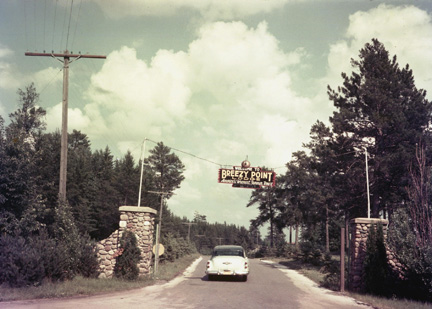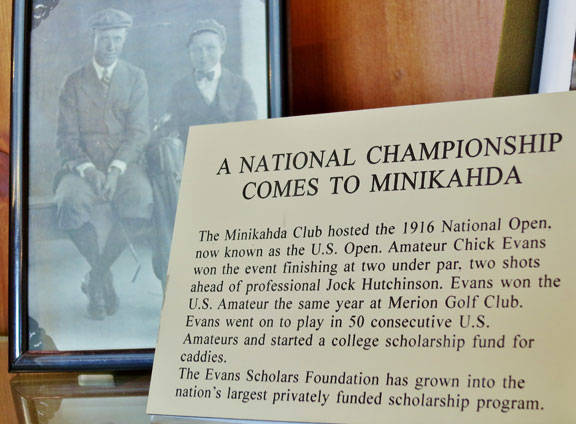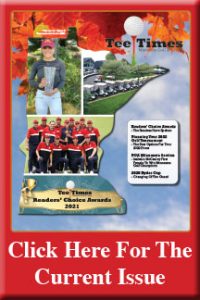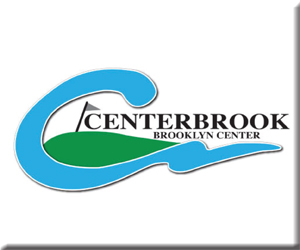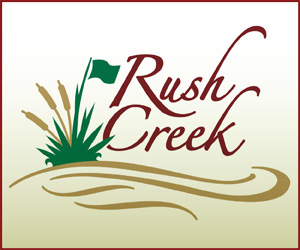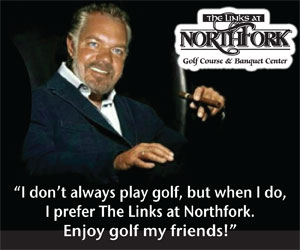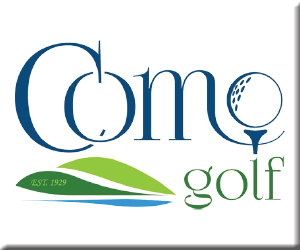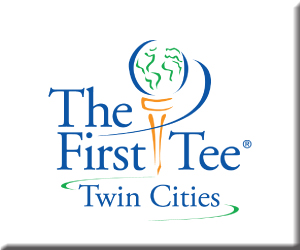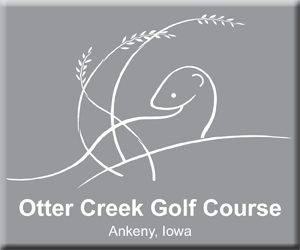The Tee Times’ Time Machine (130 Years Of Minnesota Golf)
By Rhett Arens
Tee Times is excited to introduce a new series of articles during the 2018 season that will outline the History of Minnesota Golf. We plan to publish the series in two-decade increments starting at the very beginning in the late 1880’s. From those early swings, we will take our readers on a journey through the years right up through today and the crowning events that have played out on the world stage. Along the way, we hope to share significant milestones, groundbreaking tournaments, course design trends, changes in player preferences, the steady expansion in patron options, and stories of the movers and shakers that influenced the history that Minnesota golf is built on.
Each issue we will highlight a 20-year period in which the sport saw advancements and increased participation from both Minnesota amateurs and professionals. The game may have its much debated origins in the coastal dunes of Scotland, but Minnesotans got on board quickly in the new world, embracing the challenges and rewards that come with a four hour test against the elements, a scorecard and ultimately themself. Our love of the game is evident in the quality of play Minnesota golfers demonstrate year-on-year. In 2016 we ranked #2 nationally in lowest average handicap at 15.2 (better than such golf hotbeds as the Carolina’s, Arizona, California, Florida and Texas). Only Ohio outranks the Minnesota golfer – all this in a seven month playing season. So when you’re out on the course this summer, keep in mind you are playing with and against the best; proof that those early Minnesota visionaries who brought the game to this wintery spot on earth, weren’t so crazy after-all.
Over the course of the series we will reference historical touchstones putting the Minnesota golf highlights into some chronological perspective. The game undoubtedly has its origins in high society circles, but the advent of municipal course construction, the migration to the suburbs, real estate development and the marketing of golf resort destinations have opened up the game to everyone. Private membership courses still enjoy a healthy participation, but player preferences have trended to the point that public golf courses now represent over 90% of the total courses in operation. Remember, it wasn’t always that easy to get an affordable tee time.
Let’s take a look at a general breakdown of the 130 years that golf has been played in Minnesota, starting with ground zero high above the Mississippi River in the late 1880’s at course we know today as Town and Country. From those origins, word travelled fast and interest grew quickly as the status of playing and being associated with an exclusive club drove others to dive into the golf business. Golf clubs like Winona, Minikahda and Enger Park opened around the turn of the century giving access across a broad geographical area for the first time in Minnesota. The first nationally recognized tournament came quickly and ironically Minnesota found itself on the world golf map just as World War I was kicking into high gear.
The next 20 years was schizophrenic as the roaring 20’s gave way to the cautious 30’s and any further golf investment or expansion was put on hold after the Great Depression started in 1929. But not before 100+ courses had been added to the Minnesota ledger and the PGA event planners had come-a-knocking.Amazingly a large percentage of those courses opened in the 1920’s during this period are still in operation today. Perhaps this speaks to the fact that today’s players have a respect for the game’s history and truly appreciate mature elements in a golf course design. This era was also the beginning for Minnesota’s well-deserved reputation as a first-rate host for golf’s prestigious Majors, a sentiment that continues to this day. Both the U.S. Open and the PGA Championship were held at Interlachen and Keller respectively. There is no sign of this hosting expertise letting up with the recent announcement that Hazeltine was awarded a second run at the Ryder Cup in 2028. The game was becoming increasingly available to the masses by the end of the 1930’s as the dawn of the public course had taken a firm hold and its patrons were lining up to ‘stick it’ and see what all the fuss was about.
Coming out of World War II the 40’s and 50’s saw more PGA Tournaments and a National Amateur Championships on Minnesota soil. Again the PGA Championship landed in Minnesota, this time on the St. Paul side of the river at Keller Golf Course. Keller also played host to the Western Open. From there Keller would begin its strong run of PGA and LPGA hosting duties into the early 1970’s. Many courses across the state retooled their designs to expand from 9 to 18 holes as the media and sports fans became more attuned to the game, looking towards a more competitive outing. Further refinement of the equipment design provided players with more predictable results. Especially the introduction of the toe-weighted putter in 1959 that was engineered by Karsten Solheim who went on to start-up a little known brand called Ping. Minnesota golfers smiled, bought into the technology and helped make Solheim a millionaire.
The swinging 60’s and 70’s saw an exodus to the suburbs; more discretionary income and the golf course developers soon followed the money. Television sets made their way into the average household and golf’s first media stars emerged. Arnold Palmer, Jack Nicolas and Gary Player to name just a few made their first appearances at tournaments in the Twin Cities. The U.S. Open was played at Hazeltine with England’s Tony Jacklin taking home the U.S. Open Trophy. An explosion in course numbers saw acres and acres of Minnesota farmland tilled and graded into fairways and undulating greens on the edges of the growing suburbs. As the public players stayed closer to home in those suburbs, rounds played per capita jumped significantly, fueling even more investment and a complete build-out of the municipal course networks. In total a 153 courses were opened during this 20-year period.
The rocking 80’s and 90’s were a boom for Minnesota golf with a whopping 178 courses opened and a full schedule of national events hosted. Resorts in and around Brainerd kicked into high gear offering excellent golf conditions, family friendly stay and play packages and plenty of other recreational options on the lakes. Cragun’s, Madden’s, Grand View Lodge, Breezy Point and Rutger’s all upped the ante on their offerings which meant Minnesotans could shop, price compare and enjoy world ranked public courses all season long. Other areas like Alexandria and Cross Lake joined the trend further increasing the total rounds played and Minnesota’s reputation as a leading golf destination.
On the professional front Minnesota hosted the U.S. Open at Hazeltine a second time and the tournament was marked by several high points and a dramatic low point. Payne Stewart won a dramatic comeback in an 18-hole playoff and forever cemented his place in history and people’s hearts. On the downside the tournament was interrupted in the first round due to severe thunderstorms. Amazingly six people were struck by lightning around the 11th tee, and sadly one person was killed. Not the type of publicity the Minnesota golf organizers were hoping for. There is lots of history during these years and we will dive into it in our future segment and the 80’s and 90’s.
The new millennium did not shutdown the national grid or set our clocks going backwards, but it did see the beginning of the end of the Tiger effect. Since 2003, at least 37 golf courses have shut down operations in Minnesota (according to Minnesota Golf Association data). This mirrors a national trend where golf was being considered too costly and time-consuming, especially for younger adults. So the 2000’s through 2018 get a mulligan on development as a slow-down, complete stop, and restart were all impacted through various factors.
Certainly the building-out exuberance of the mid-90’s going forward was fueled by Tiger Woods coming into his own and ultimately owning the PGA. Nobody was complaining back then as the game got a booster shot in the arm and rounds increased across the state. It’s easy to look back and see that too many courses were opened or expanded and as a result some form of correction was inevitable. The consolidation or adjustment as it was called was slowly unfolding in the fall of 2008 when the stock market plunged and with it… golf rounds. The Great Recession had begun and it would be a few years before the strongest and most adaptable operations reemerged and the health of the Minnesota golf game reinstated itself as a national leader.
Going forward we hope to treat the Tee Times readers to an abundance of fact’s, antidotes, images and hopefully a few surprises. Minnesota is rich in golf history. It is a source of pride on many levels for patrons of the game and the industry who service them. Sit back, put your feet up, grab a cold Arnold Palmer, complete a proper toast to Arnie and enjoy your trip through time.
